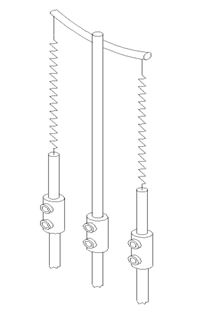Gauge Filament Replacement
Tungsten filaments have an emission life of one to three years in UHV. The life will be dependent on the residual gases present, range of pressures and vibration coupled to the filament. Tungsten filaments become brittle in use and the most common causes of failure are mechanical or thermal shocks. If the gaugehead is to be moved to another location it is advisable to replace the filament assembly.
The filament assemblies are fixed to the feedthrough assembly by barrel connectors and Allen-headed set screws. An Allen key is provided with each replacement filament assembly. A pair of long-nosed pliers, side cutters, cleanroom gloves, cotton buds and some isopropyl alcohol are required.
New gauge filaments must be operated carefully to achieve good results and long life. The filaments are under tension when new: run both filaments for a few seconds in emission to reduce and equalise the tension. Operate at low emission current in order to outgas them fully before increasing the emission current. Do not subject the gauge to electron-bombardment degas until it has run at the highest emission current available and the resultant pressure burst has fully subsided.
Ensure that the front face of the AIGLx ion gauge connector is kept clean, since effective insulation resistances of the order of 1016 ohms are required. Isopropyl alcohol or CFC on a clean lint-free swab may be used to remove fingerprints or dirt. These solvents do not affect the PEEK housing of the connector.

